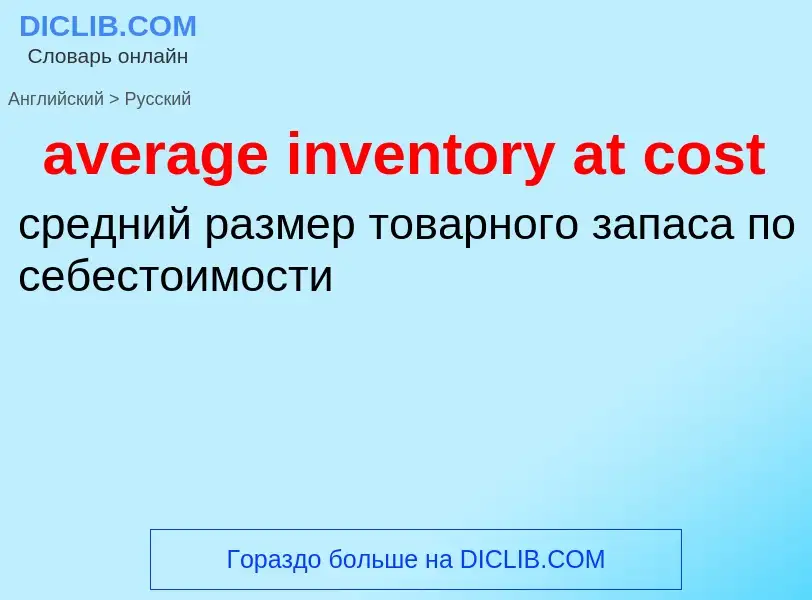Перевод и анализ слов искусственным интеллектом ChatGPT
На этой странице Вы можете получить подробный анализ слова или словосочетания, произведенный с помощью лучшей на сегодняшний день технологии искусственного интеллекта:
- как употребляется слово
- частота употребления
- используется оно чаще в устной или письменной речи
- варианты перевода слова
- примеры употребления (несколько фраз с переводом)
- этимология
average inventory at cost - перевод на русский
Смотрите также
бухгалтерский учет
затраты на поддержание запасов [по поддержанию запасов] (затраты на создание и хранение товарных запасов (капитальные вложения и текущие затраты, связанные с созданием и эксплуатацией мощностей по хранению товарных запасов, а также расходы на закупку запасаемых товаров) плюс затраты по подготовке запасов к использованию (совокупность капитальных и текущих затрат, связанных с передачей запасов в производство))
экономика
стоимость хранения
Смотрите также
Смотрите также
общая лексика
IVA корректировка [уточнение] стоимости запасов
(разница между изменением балансовой стоимости запасов и изменением стоимости запасов за счет изменения объема наличных запасов; данная разница вычитается из прибыли компании по основной деятельности до вычета налогов и других вычитаемых составляющих (напр., процентов, амортизационных отчислений и т. п.), чтобы исключить любые прибыли или убытки, вызванные изменением рыночной цены запасов)
бухгалтерский учет
оценка (товарно-материальных) запасов (оценка стоимости сырья и материалов, незавершенного производства и готовой продукции на складе (напр., при составлении финансовой отчетности для определения стоимости запасов на конец периода и расчета себестоимости реализованной продукции); может проводиться методом ФИФО, методом ЛИФО, по средней стоимости или по стоимости отдельной единицы материалов)
синоним
Определение
Википедия
Dollar cost averaging (DCA) is an investment strategy that aims to apply value investing principles to regular investment. The term was first coined by Benjamin Graham in his book The Intelligent Investor. Graham writes that dollar cost averaging "means simply that the practitioner invests in common stocks the same number of dollars each month or each quarter. In this way he buys more shares when the market is low than when it is high, and he is likely to end up with a satisfactory overall price for all his holdings."
Dollar cost averaging is also called pound-cost averaging (in the UK), and, irrespective of currency, unit cost averaging, incremental trading, or the cost average effect. It should not be confused with the constant dollar plan, which is a form of rebalancing investments.
The technique is so called because of its potential for reducing the average cost of shares bought. As the number of shares that can be bought for a fixed amount of money varies inversely with their price, DCA effectively leads to more shares being purchased when their price is low and fewer when they are expensive. As a result, DCA can lower the total average cost per share of the investment, giving the investor a lower overall cost for the shares purchased over time. The alternate strategies are to purchase a fixed number of shares each time period, or to save up the funds that are available for investment and attempt to purchase shares at times when the market is low, ie market timing. A major advantage for the investor using DCA is not having to make a decision on a day to day basis about the best time to invest the funds, but there are obvious advantages in simplicity and also in promoting habitual or automated regular investing.

